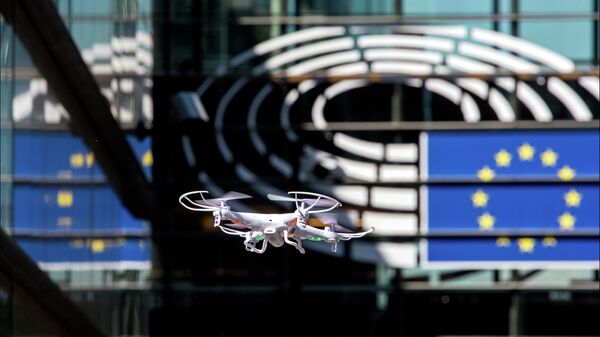The EU’s border agency, Frontex, is “now an internal surveillance agency”, according to a UK-based charity.
Frontex – aka the European Border and Coast Guard Agency – already had spying powers. But they were limited to the so called “pre-frontier area” such as “the high seas or selected third-country ports”. However, new powers granted by the EU will now permit Frontex, and its proposed 10,000 person strong force, to spy inside EU states themselves, according to Statewatch.
Our latest analysis looks at the new powers given to Frontex to conduct surveillance of migratory movements within the EU:
— Statewatch (@StatewatchEU) December 20, 2019
Monitoring "secondary movements" and "hotspots": Frontex is now an internal surveillance agencyhttps://t.co/dG5c0Y9DcM
The EU law in question is Regulation (EU) 2019/1896 of the European Parliament and of The Council of 13 November 2019.
Recital 34 of the regulation sets out part of the reason for the law in the first place. It says:
“[The European Border Surveillance System] should provide an exhaustive situational picture not only at the external borders but also within the Schengen area and in the pre-frontier area. It should cover land, sea and air border surveillance and border checks.” [emphasis added]
New Surveillance Powers Hidden in Technical Language
Article 24 says that Frontex, shall:
“establish and maintain a European situational picture in order to provide the national coordination centres and the Commission with effective, accurate and timely information and analysis, covering the external borders, the pre-frontier area and unauthorised secondary movements”
According to Articles 24 and 26 the European “situational picture” which Frontex must monitor and deal with includes “secondary movements” and “hotspots”.
There is no actual definition of “secondary movements” within the law. But Statewatch says it is “generally used to refer to journeys between EU member states undertaken without permission”. “Hotspots” meanwhile refers to areas where the EU and member states cooperate in dealing with a “significant increase in the number of migrants arriving at the external borders”.
Border Force "Standing Corps" of 10,000
The same regulation says it will ‘reform’ Frontex to give it a “stronger mandate”. This will include a “standing corps” of 10,000 people with “executive powers” to “effectively support Member States on the ground in their efforts to protect the external borders, to fight cross-border crime and to significantly step up the effective and sustainable return of irregular migrants.”
Statewatch says that the “situational picture” compiled by Frontex comes from a vast array of sources including:
- national border surveillance systems;
- stationary and mobile sensors operated by national border agencies;
- border surveillance patrols and “other monitoring missions”;
- local, regional and other coordination centres;
- immigration liaison officers, operational centres and contact points;
- border checks; and
- third countries’ authorities.
New Powers Contain "Risks for Fundamental Rights"
Statewatch says that the new powers and procedures “may mean an increase in operations against ‘unauthorised’ migrants". They warn that this would be accompanied by "risks for fundamental rights such as the possibility of racial profiling, detention, violence and the denial of access to asylum procedures”
Furthermore there is no evidence of any impact assessment produced by the EU Commission to accompany this expansion of surveillance and executive power for Frontex. Such an impact assessment would have “ set out the reasoning and justifications” for these new spying powers, according to Statewatch.
The civil liberties organisation concluded their report by calling for journalists, officials, politicians and researchers to look into the potential effects these new laws will have on fundamental human rights.


